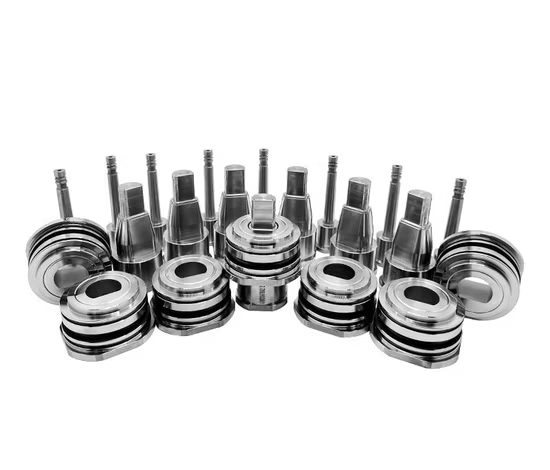Where Design Meets Movement: Inside the Endoscope’s Bending Section

Endoscopy is leading in the field of minimally invasive diagnosis and surgery. The bending part of an endoscope is one of its most complicated parts. It allows the doctor to control the scope and move it accurately within the human body, following the complicated anatomical ways safely and efficiently. Behind this smooth articulation lies not just engineering brilliance, but also the unseen contribution of medical mold accessories—small yet powerful elements that ensure form, flexibility, and function.
The article discusses the interdependence between the mechanical design and the precision molding as the dynamic factor that determines the performance of the modern endoscopes. We will take a peek into the bending section, unravel the advanced mold component role, and see how quality, material development, and future trends are building the future of flexible endoscopy.
Anatomy and Role of the Endoscope Bending Section:
The insertion tube of an endoscope is the most flexible and responsive part that allows bending. It is found towards the distal end and is necessary to maneuver the endoscope within the body of the patient. The scope can be curved in various directions- typically up to 210 -using this section, which enables close examinations, precise biopsy and focused interventions.
Its internal structure entails a number of interrelated components:
- Articulation wires: They are mainly made of stainless steel. The articulation wires contract and relax to create motion.
- Control rings and joint covers: Such parts allow seamless pivoting.
- Rubber or polymer sheaths: They protect the internal mechanisms of endoscope and also ensure the comfort of the patient.
- Springs and support plates: They are used for directional support and recoil.
All these components mentioned above are housed within a durable and highly flexible tube. The flexible tube is then often reinforced with braided mesh for added strength. The external shell is meant to be biocompatible, smooth, and tear proof so as to make movement easy and cause minimum trauma to the patient.
Due to the ever-more-complex procedures, particularly within gastrointestinal endoscopy and bronchoscopic endoscopy, the requirements of the endoscope bending section increase. It has to provide excellent maneuverability and should not sacrifice structural reliability- this is why the quality of every single component within it matters so much in terms of achieving good results.
Introduction to Medical Mold Accessories:
Behind many of the small but vital components in an endoscope’s bending section are medical mold accessories. These are injection-molded components, sealing rings, spacers, hinges and custom-fabricated components produced using medical-grade plastics or elastomers. These accessories are not always seen by the user but are fundamental to the design, stability and performance of the endoscope bending section.
Medical mold accessories are typically produced through high-precision mold tooling and injection molding processes. The most commonly used materials for medical mold accessories are Polycarbonate, silicone, TPU, and PEEK. Such materials are prioritized because they are highly durable, possess good elasticity, heat resistance, and biocompatibility. Precise details would be different in case it is a structural part, a supportive part, or a dynamic part.
Miniaturization trend in medical devices has also increased the requirement of precision and reliability of molded components that are capable of surviving repetitive flexing, disinfectant exposure, and sterilization cycles.
Connecting Molding Precision to Endoscopic Flexibility:
Precision-molded components are essential to the structural support and alignment of the fluid movement of the bending section. Any one mismatch or discrepancy in a molded spacer or connector can cause limited movement, excessive wear or even failure in service.
Medical mold accessories enhance endoscope functionality in following ways:
- Consistent alignment: Molded guides and spacers ensure articulation wires remain perfectly aligned. This allows smooth bending motions.
- Seal integrity: Custom-molded seals prevent fluid ingress. Thus, it helps in maintaining the internal cleanliness and also aids in protecting the delicate electronics of endoscope.
- Durability and shock absorption: High-quality elastomer molds cushion the internal mechanisms from impact and repeated stress.
- Miniaturization support: As endoscope tips become thinner, molded components allow compact internal arrangements.
Mold accessories also reduce friction and wear between moving surfaces, thanks to the realization of precise geometries and smooth surfaces, increasing the life of the device and its reliability in clinical use.
Such a symbiosis of design and molded support components is a good illustration of how multidisciplinary engineering provides safe, flexible, and effective diagnostics.
Quality Control and Material Innovation:
Whether in the production of endoscopes or the mold accessories, quality assurance is not an addition, but rather a pillar. The manufacturers are required to follow the standards of ISO 13485 and strict FDA and CE conformity procedures, as well as when the components directly affect the safety of the patients.
Are you curious to know the quality control of the mold accessory production? Without any further delay, let’s discuss them:
- 3D laser scanning for dimensional accuracy.
- Material validation is important for ensuring biocompatibility and chemical resistance.
- Mechanical testing is preferred for fatigue, tensile strength, and elongation.
- Cleanroom production helps in maintaining sterility and avoiding contaminants.
Future Trends in Endoscope Design and Mold Manufacturing:
Precision movement and reduced risk of contamination are the two forces that merge to shape the future of flexible endoscopy. Endoscope manufacturers are now investing in latest hybrid models to achieve such targets. In hybrid systems, the endoscope bending sections are disposable. Also, the modular assemblies can be replaced partially or entirely after use.
At the same time, mold makers are stepping up to the plate with:
- Micro-molding technologies are capable of producing ultra-fine components for miniature endoscopes.
- Smart mold designs help in incorporating embedded sensors to monitor internal temperature and pressure in real-time.
- AI-driven quality control systems detect microscopic inconsistencies. Besides that, they also prevent faulty batches from reaching assembly lines.
As the robot-assisted endoscopy rises, the requirements of components capable of enabling finer, multi-axis movements also grow. Precision molding will have an even larger part in the provision of responsive, lightweight, and ergonomic designs.
The cooperation between medical device engineers and the specialists in the field of mold technology will influence the development of safer, smarter, and more sustainable endoscopic solutions in the next decade.
Conclusion:
It is at the bending part of an endoscope that mechanical fineness and medical need come together. Its contribution to the possibility of navigation, accuracy, and patient comfort are difficult to overrate. And yet, the flexibility and reliability of this section would not be possible without the exacting standards of medical mold accessories that support its construction and movement.
Molded accessories may be the unsung heroes of a life-saving tool, whether they are the soft polymer rings that close joints or the hard plastic parts that position articulation wires. The technology of endoscopes is developing, which means that materials, methods, and ideas underlying these elements must also evolve.
Accuracy of design and control of movement in medical engineering and molding is synergetic to the extent that every procedure carried out is accurate, safe, and confident- all of which lead to better patient care and clinical outcome.




